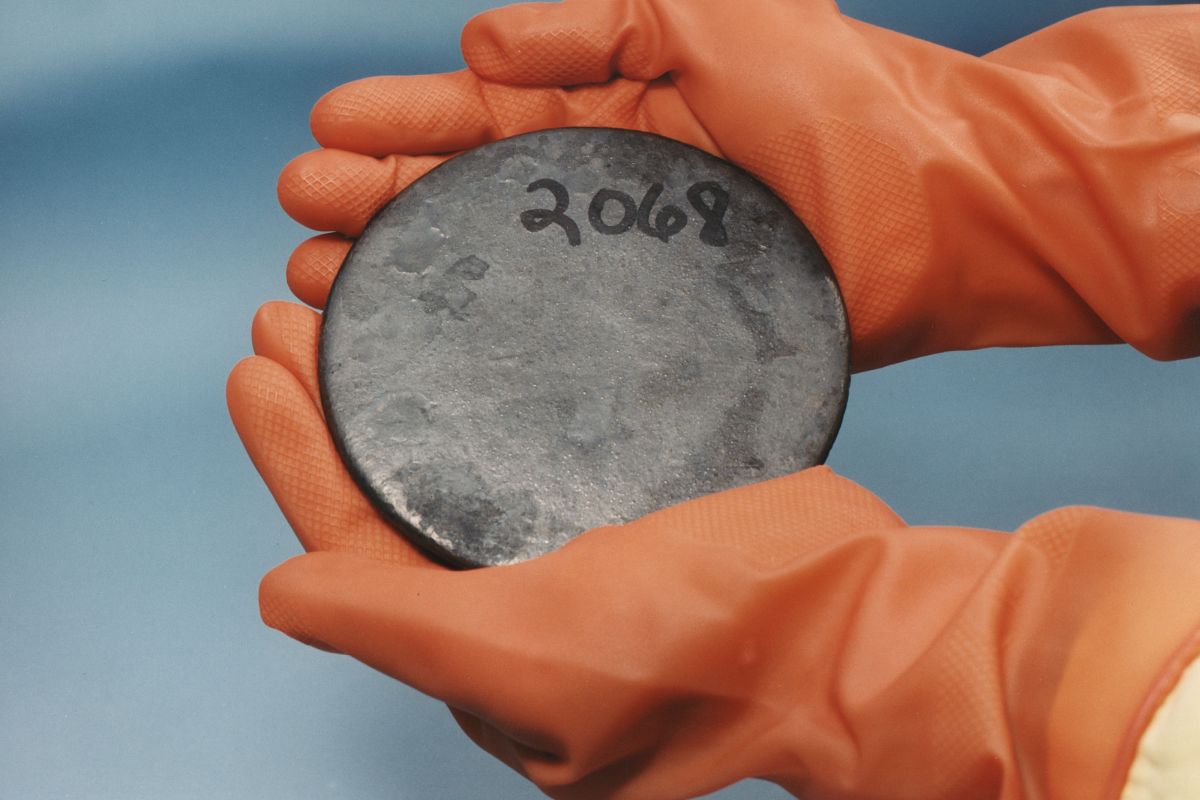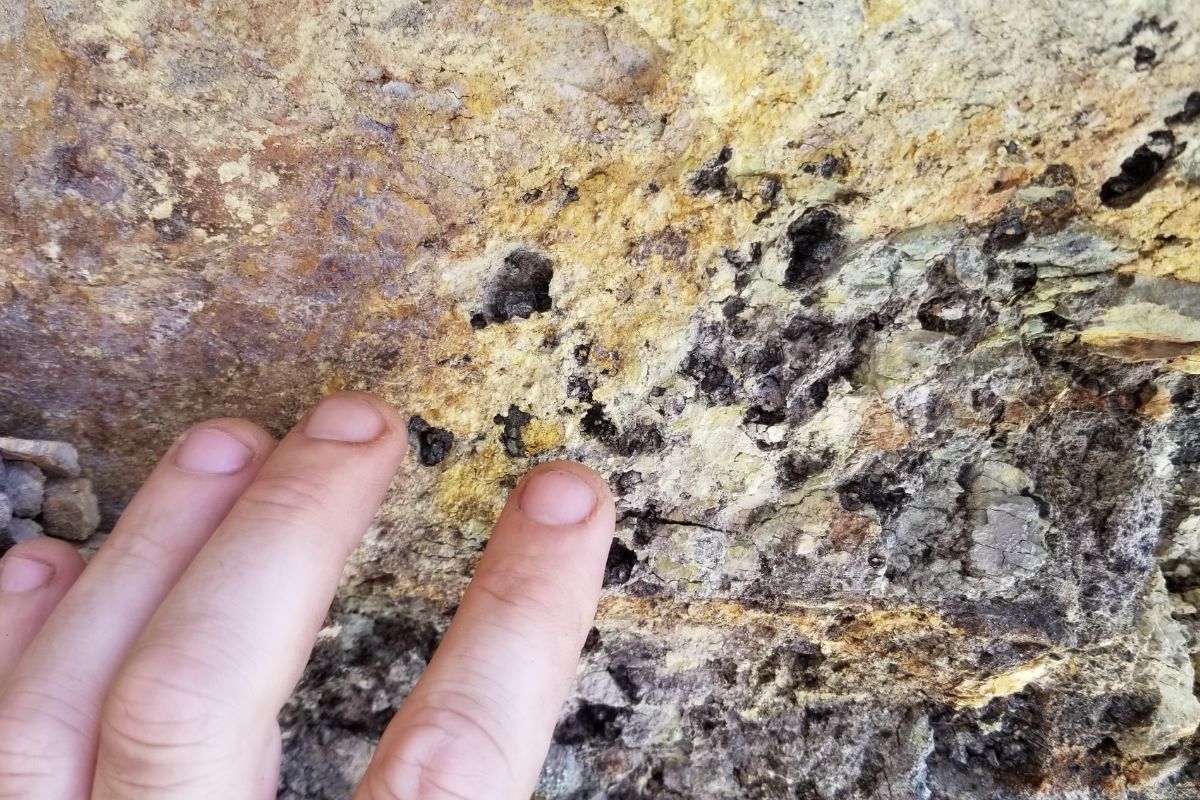The world of investments is a rich and varied one, and there are a number of elements and assets that have grown in popularity in recent years.

One example of this is uranium, which has become an increasingly popular investment option for investors looking to diversify their portfolios.
We took a closer look at investing in uranium, including the risks and benefits that you should be aware of when making your investment.
What Is Uranium?
Uranium is a naturally occurring element found in varying quantities throughout the Earth’s crust.
It can be extracted from various sources as either yellow or greenish-yellow colored crystals.
These minerals are used in nuclear power plants, where they are processed into fuel rods.
The most common form of uranium ore is yellow cake, which contains about 0.7% of uranium by weight.
This material is then enriched using centrifuges to produce highly concentrated uranium hexafluoride gas (UF6).
UF6 is then converted into uranium metal powder through a process called “milling”.
The resulting product is known as yellow cake, which contains between 3%-5% uranium by weight.
Yellow cake is then shipped to enrichment facilities, where it is further refined into higher concentrations of uranium oxide.
This final step produces uranium dioxide, which is used to create fuel pellets for use in nuclear reactors.
Why Invest In Uranium?
There are several reasons why people invest in uranium, and we explored a few of these below:
A Safe Investment
One of the main reasons why people invest in gold is because it is considered to be a safe haven asset. Similarly, many investors believe that uranium will provide them with some protection against inflation and other economic downturns.
Low Risk
Unlike other types of commodities such as oil (see also ‘How To Invest In Oil With Little Money‘), uranium does not fluctuate wildly in price. As a result, it is generally less volatile than other types of investments.
Good Dividend Yield
Although uranium is not particularly liquid, it tends to generate a good dividend yield. For instance, the average yield on uranium stocks is currently around 2%.
Potential Growth
Although uranium is a relatively low-risk commodity, its value could increase over time due to rising demand.
Limited Supply
As mentioned above, uranium is a finite resource. Therefore, the supply will eventually run out, meaning that prices will rise over time. Investing in uranium is therefore similar to investing in gold (see also ‘Gold vs. Platinum: Which Should You Invest In?‘), but with more risk involved.
How Can I Invest In Uranium?
There are a number of ways to invest in uranium, and the most common include:
Uranium Stocks
Uranium stocks are shares in companies that extract, refine, store, transport, and sell uranium.
They are usually traded on stock exchanges like the New York Stock Exchange (NYSE) or London Stock Exchange (LSE), and they are often listed under the symbol URN.
You can buy shares directly via brokers, online trading platforms, or through mutual funds.
Some of the pros of uranium stocks include :
- The ability to earn dividends
- The potential for capital gains
- The potential for growth
However, there are also a number of cons associated with this type of investment, including:
- Lack of liquidity
- High volatility
- Risk of expropriation
- Risk of higher taxes
Uranium ETFs
An exchange-traded fund (ETF) is an investment vehicle (see also ‘What Is An Investment Vehicle?‘) that tracks the performance of a particular index or group of assets.

Some ETFs track the price movements of uranium; as an example, the DB Uranium ETF tracks the price movement of uranium.
By investing in a uranium ETF, you will indirectly own shares in uranium mining companies.
The main advantages of investing in uranium ETFs include:
- Access to diversified exposure to uranium
- Potential for capital appreciation
- Low correlation to traditional markets
- Lower fees compared to direct ownership
Disadvantages include:
- No dividends
- Higher volatility
- Risk of losing money
Uranium Mining Companies
Another way to invest in uranium is to purchase shares in mining companies.
These companies extract uranium from the ground and then enrich it.
The enriched uranium is used to produce nuclear power plants, which provide electricity to millions of people worldwide.
The main advantages include:
- Diversification
- Capital appreciation
- Potential for income generation
Disadvantages include :
- Liquidity issues
- High initial costs
- Risk of expropriation
Uranium Exchanges
Finally, there are also a number of exchanges that trade in uranium futures contracts.
Futures allow investors to speculate on future price movements without actually owning any physical uranium.
This means that investors can benefit from price increases while avoiding the risks associated with owning physical uranium.
Advantages include:
- Ability to hedge against price fluctuations
- Potential for capital gains
- Potential for income
Disadvantages include:
- High transaction costs
- Limited liquidity
- Risks of expropriation
What Is A Good Investment In Uranium?
If you want to invest in uranium, you need to decide what kind of investor you are.
Are you looking for a long-term investment, or do you prefer quick returns?
Do you have access to large amounts of cash, or do you prefer to use your retirement savings?
These questions will help you determine whether you should invest in uranium stocks, uranium ETFs, or uranium futures.
some investors also choose to maximize the diversity of their portfolio by spreading their investment across a range of types of uranium investment.
What Are The Risks Of Investing In Uranium?
Investing in uranium has many benefits, but it is important to understand the risks involved before making a decision.
Here are some of the most common risks associated with investing in uranium:
Expropriation
This risk refers to the possibility that governments may take control over the resources that they believe belong to them. For example, if a country believes that its citizens have been deprived of natural resources, it may nationalize those resources.
In addition to taking control of the resource, governments may also seek compensation for the resources taken. If this happens, the government may force the company that owns the resource to pay compensation.
In the case of uranium, this risk is particularly high because the world’s supply of uranium is limited. As a result, countries could potentially claim that they own all the uranium available.
Political Risk
This risk refers to political instability and uncertainty. Governments change frequently, and when new leaders come into power, they often make changes to policies and laws.
Environmental Risk
The environmental impact of mining uranium is significant. Mining companies must remove tons of rock and soil from the earth. They then process these materials to extract the uranium ore.
Finally, they store the waste material produced during processing. As a result, mining companies produce radioactive waste that contains dangerous levels of radiation.
Final Thoughts
Investing in uranium is an exciting opportunity for anyone who wants to diversify their investments, but it is important to be aware of the risks involved to protect your money and long-term financial security.
- Dividend Growth Investing for Millennials - February 27, 2025
- The Ultimate Guide to Investing in Precious Metals Today - December 6, 2024
- Essential Cryptocurrency Trends: What You Need to Know - December 6, 2024

